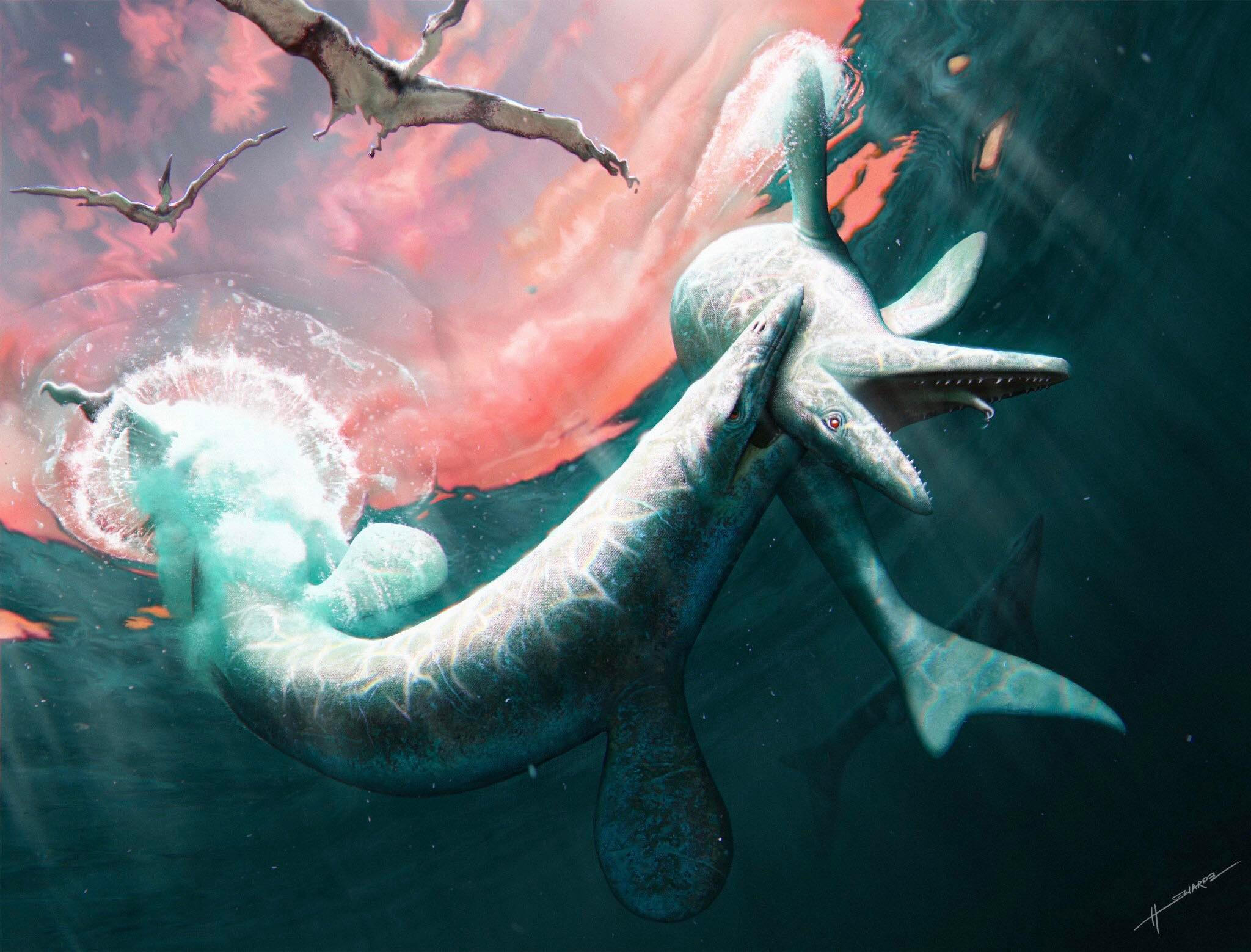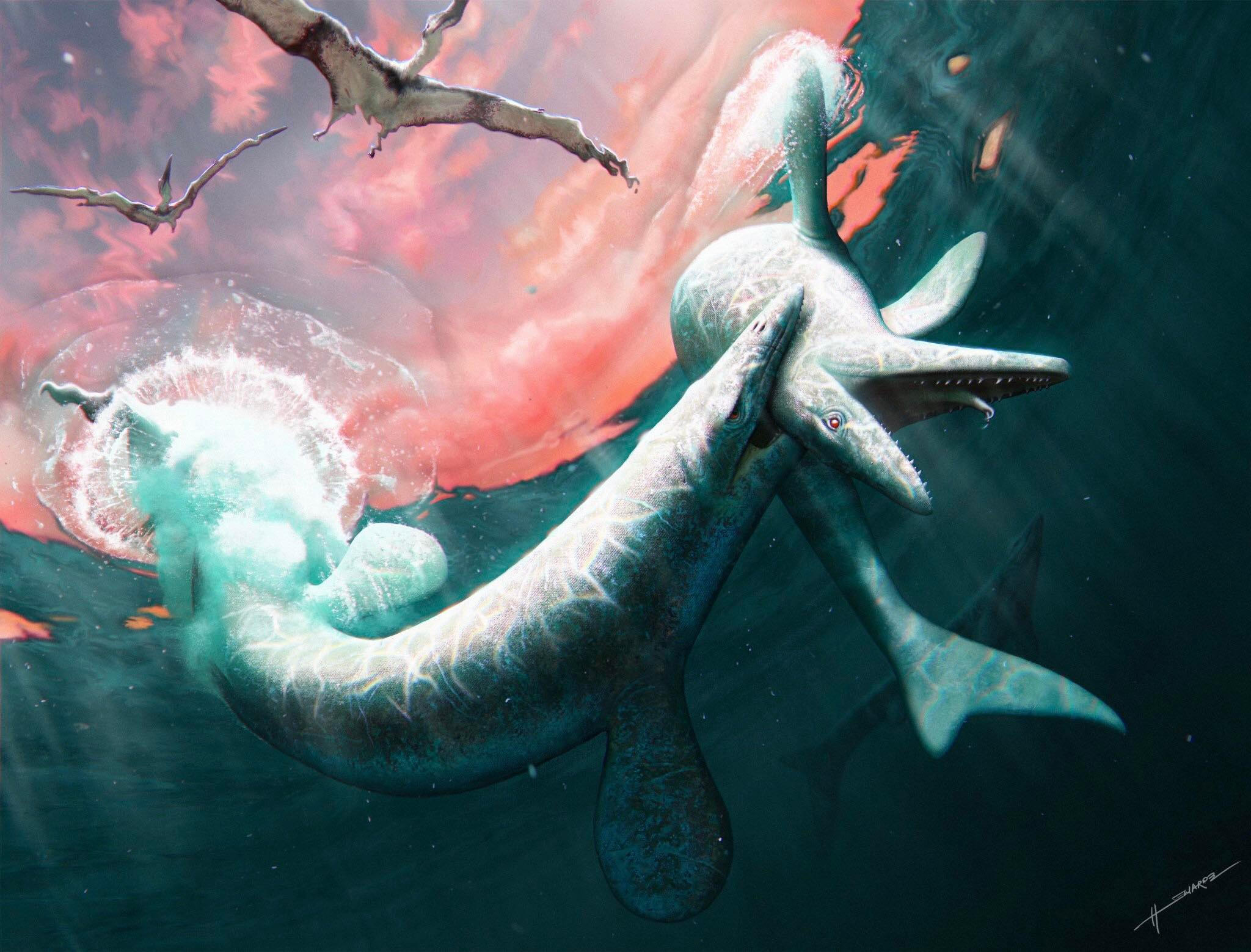
The discovery of Jörmungandr walhallaensis, a new mosasaur species, offers critical insights into the evolution of these ancient marine lizards and the geologic history of late Cretaceous North America. Found near Walhalla, North Dakota, this transitional species fills a gap between primitive and more advanced mosasaurs and suggests new details about their aquatic adaptations and lineage. A reconstruction of two Jormungandr walhallaensis mosasaurs fighting. Credit: Henry Sharpe
Jormungandr, a colossal 24-foot-long marine lizard that lived 80 million years ago, is found to be a transitional species between two well-known mosasaurs.
Scientists have recently identified a new species of mosasaur, which were large, carnivorous aquatic lizards that lived in the late Cretaceous period. With “transitional” traits that place it between two well-known mosasaurs, the new species is named after a sea serpent in Norse mythology, Jormungandr, and the small North Dakota city Walhalla near to where the fossil was found. A paper describing Jǫrmungandr walhallaensis was recently published in the Bulletin of the American Museum of Natural History.
Comparative Features and Historical Context
“If you put flippers on a Komodo dragon and made it really big, that’s basically what it would have looked like,” said the study’s lead author Amelia Zietlow, a Ph.D. student in comparative biology at the American Museum of Natural History’s Richard Gilder Graduate School.
The first mosasaur was discovered more than 200 years ago, and the word “mosasaur” predates the word “dinosaur.” But many questions about these animals remain, including how many times they evolved flippers and became fully aquatic—researchers think it was at least three times, and maybe four or more—and whether they are more closely related to monitor lizards or snakes. Researchers are still trying to determine how the different groups of mosasaurs are related to each other, and the new study adds a new piece to that puzzle.

A line drawing of the skull of Jormungandr walhallaensis. Credit: Henry Sharpe
The Fossil Discovery
The fossil on which the study is based was discovered in 2015, when researchers excavating in the northeastern part of North Dakota found an impressive specimen: a nearly complete skull, jaws, and cervical spine, as well as a number of vertebrae.
After extensive analysis and surface scanning of the fossil material, Zietlow and her collaborators found that this animal is a new species with a mosaic of features seen in two iconic mosasaurs: Clidastes, a smaller and more primitive form of mosasaur; and Mosasaurus, a larger form that grew to be nearly 50 feet long and lived alongside Tyrannosaurus rex. The specimen is estimated to be about 24 feet long, and in addition to flippers and a shark-like tail, it would have had “angry eyebrows” caused by a bony ridge on the skull, and a slightly stumpy tail that would have been shorter than its body.
Evolutionary Insights and Geological Significance
“As these animals evolved into these


